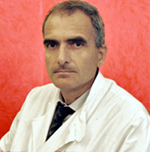 Risposta: Si ogni persona ha un proprio personale linguaggio interiore. Due scienziati italiani sono addirittura riusciti a registrare la “voce”, ovvero la attivazione di specifiche aree acustiche, mentre alcuni pazienti pensavano.
Risposta: Si ogni persona ha un proprio personale linguaggio interiore. Due scienziati italiani sono addirittura riusciti a registrare la “voce”, ovvero la attivazione di specifiche aree acustiche, mentre alcuni pazienti pensavano.
Incredibile ma vero: Ecco l’abstract dell’articolo:
Sound representation in higher language areas during language generation
Lorenzo Magrassia, Giuseppe Aromataris, Alessandro Cabrini, Valerio Annovazzi-Lodi, and Andrea Moro
Significance
The results of our experiments show that a special representation of sound is actually exploited by the brain during language generation, even in the absence of speech. Taking advantage of data collected during neurosurgical operations on awake patients, here we cross-correlated the cortical activity in the frontal and temporal language areas of a person reading aloud or mentally with the envelope of the sound of the corresponding utterances. In both cases, cortical activity and the envelope of the sound of the utterances were significantly correlated. This suggests that in hearing people, sound representation deeply informs generation of linguistic expressions at a much higher level than previously thought. This may help in designing new strategies to help people with language disorders such as aphasia.
Abstract
How language is encoded by neural activity in the higher-level language areas of humans is still largely unknown. We investigated whether the electrophysiological activity of Broca’s area correlates with the sound of the utterances produced. During speech perception, the electric cortical activity of the auditory areas correlates with the sound envelope of the utterances. In our experiment, we compared the electrocorticogram recorded during awake neurosurgical operations in Broca’s area and in the dominant temporal lobe with the sound envelope of single words versus sentences read aloud or mentally by the patients. Our results indicate that the electrocorticogram correlates with the sound envelope of the utterances, starting before any sound is produced and even in the absence of speech, when the patient is reading mentally. No correlations were found when the electrocorticogram was recorded in the superior parietal gyrus, an area not directly involved in language generation, or in Broca’s area when the participants were executing a repetitive motor task, which did not include any linguistic content, with their dominant hand. The distribution of suprathreshold correlations across frequencies of cortical activities varied whether the sound envelope derived from words or sentences. Our results suggest the activity of language areas is organized by sound when language is generated before any utterance is produced or heard.